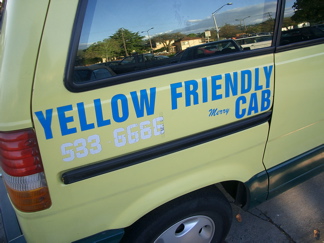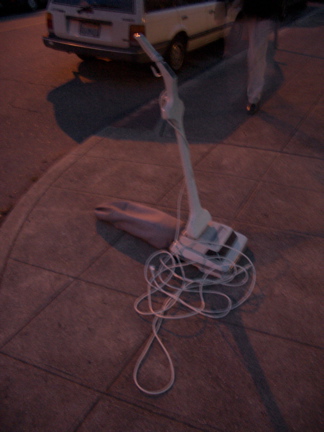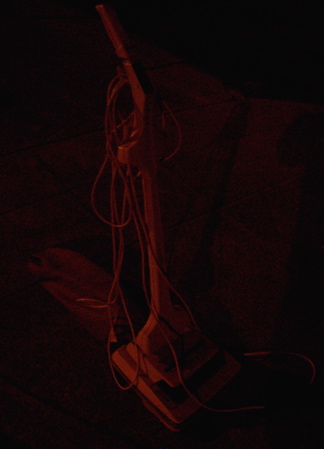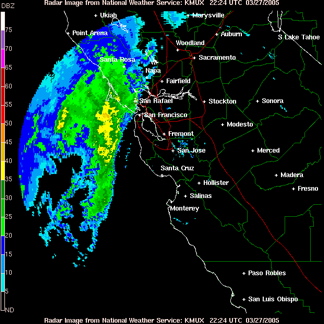The topic was ear gauging. The Resident Teen was telling me he intends to gauge his ears. What that means, in brief, is stretching out an ear piercing so that you can fit a piece of jewelry into the enlarged hole; one piece of jewelry inserted into a gauged ear is a colored plug. It’s a modest piece of body modification, really, and one that the Teen’s mom and dad can live with a little more easily at this point than a tattoo, say, or rings or spikes of various descriptions inserted into various vicariously painful body locales.
In talking about the size of earlobe hole that he desired to produce through gauging, the Teen described the largest diameter typically done as “double zero” and held up his fingers to indicate about a quarter-inch. Hearing “double zero,” I immediately thought of “double ought,” one of the largest sizes of buck shot (it turns out there is a larger size — “triple ought”). I wondered if the double-zero gauge for ear piercing was the same diameter as double-ought shot.
Not to keep anyone in suspense, I still don’t know. But I started looking for information on the size of double-ought shot. The non-precise answers I came up with suggested a range equivalent to .30-caliber to .38-caliber bullets — that is, .3 to .38 inches.
I didn’t hunt long, because one of the first references I consulted, with a page title of “Firearms Tutorial,” was a discourse on wound ballistics — the study of damage caused to human tissue by different types of gunshots. I was slow to realize the subject, because I was focusing on finding the diameter of buckshot. The Google entry for the page suggested I’d find the information there. When I hit the link, I searched forward to “double-ought,” and found the statement, “A 00 or ‘double ought’ pellet is essentially equivalent to a low velocity .38 handgun projectile.”
Then I considered the context. In the next paragraph, I encountered this:
“At close range, the pellets essentially act as one mass, and a typical shell would give the mass of pellets a muzzle velocity of 1300 fps (feet per second) and KE (kinetic energy) of 2100 ft/lb. At close range (less than 4 feet) an entrance wound would be about 1 inch diameter, and the wound cavity would contain wadding. At intermediate range (4 to 12 feet) the entrance wound is up to 2 inches diameter, but the borders may show individual pellet markings. Wadding may be found near the surface of the wound. Beyond 12 feet, choke, barrel length, and pellet size determine the wounding.”
It turns out the “Firearms Tutorial” is a resource for forensic pathologists, giving an introduction to the world of guns and everything they can do to the body, with special attention, it seems, on close-range effects. Living in a place where the number of people who die each year of gunshot wounds rivals the total of deaths during the entire Iraq war*, it’s good to have such a resource at the ready.
(*On the statistics: The U.S. Centers for Disease Control report, “Deaths: Final Data for 2002,” (PDF file) puts the total number of U.S. firearms deaths for the year — the most recent the CDC has covered — at 30,242. (I was surprised to see that more than half of those deaths — 17,108 — were suicides.) It’s hard to know the real toll in Iraq since our war began in March 2003, but the Iraq Body Count site, which bases its estimates on an analysis of press accounts, puts the number of Iraqi dead so far at a maximum of about 20,000. The Iraq Coalition Casualties site puts the number of U.S. and allied troops killed so far at 1,726, and notes that at least 210 foreign contract workers have died, too). The big unknown in the total Iraq numbers is how many Iraqi troops and insurgent fighters have died since the fighting started. Ten thousand? Twenty thousand?)
Like this:
Like Loading...





